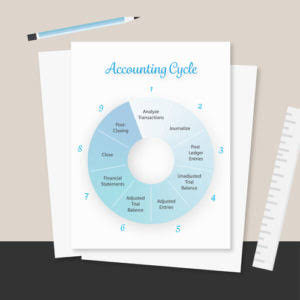
The expanded equation is particularly valuable for internal decision-making and detailed financial analysis, as it highlights the dynamic interplay between operational and financing activities. An account with a balance that is the opposite of the normal balance. For example, Accumulated Depreciation is a Accounting Periods and Methods contra asset account, because its credit balance is contra to the debit balance for an asset account. This is an owner’s equity account and as such you would expect a credit balance. Other examples include (1) the allowance for doubtful accounts, (2) discount on bonds payable, (3) sales returns and allowances, and (4) sales discounts.
- Conversely, many companies are required to meet certain profits each year in order to maintain loan covenants with their lenders.
- The totals for the first eight transactions indicate that the company had assets of $17,200.
- The monthly trial balance lists account names from the chart of accounts with total account balances or amounts.
- This gives them a better idea of how profitable the company’s core business activities are.
- The trial balance includes columns with total debit and total credit transactions at the bottom of the report.
- The totals now indicate that Accounting Software, Inc. has assets of $16,300.
- This can include things like income tax, interest expense, interest income, and gains or losses from sales of fixed assets.
Expense Tracking and Management
They reduce equity because they represent outflows of economic resources necessary to sustain operations. Expenses are typically categorized by function, such as administrative and selling, or nature, such as fixed and variable. If the revenues earned are a main activity of the business, they are considered to be operating revenues.
Module 4: Financial Statements of Business Organizations
This transaction affects only the assets of the equation; therefore there is no corresponding effect in liabilities or shareholder’s equity on the right side of the equation. Discover more about the primary accounting equation, other accounting formulas and their applications from knowledgeable faculty and coursework applied to real-world issues. Our 6 academic sessions per year allow you to start when you’re ready and learn at your own pace, finishing on a regular or accelerated schedule that meets your personal and professional goals. A corporation’s own stock that has been repurchased from stockholders.
- The accounting equation helps to assess whether business transactions carried out by the company are being accurately reflected in its books and accounts.
- Equity includes contributions from shareholders or owners, retained earnings, and other comprehensive income.
- Service Revenues include work completed whether or not it was billed.
- Some people refer to net income as net earnings, net profit, or simply your “bottom line” (nicknamed from its location at the bottom of the income statement).
- ROA helps investors and business owners understand how effectively a company is turning its investments in assets into profits.
- On the other hand, they need to show more profit to meet lender’s requirements.
Expenses
The accounting equation is ingeniously designed to always remain balanced, meaning the total amount of assets will always equal the sum of liabilities and equity. For instance, when a company takes out a loan, assets (cash) increase, as do liabilities (loans payable), which keeps the equation balanced. Similarly, when a business issues new shares, both assets (cash) and equity increase.
accounting formulas for small businesses
The accounting equation is used in compliance with accounting standards and regulations. It ensures that financial statements are prepared in a standardized and consistent manner. It is a tool for financial analysis, and it helps in evaluating a company’s financial performance. For example, if a company’s assets are increasing while its liabilities and Equity remain the same, it suggests that the company is growing and generating more value for its shareholders.
- The amount of a long-term asset’s cost that has been allocated to Depreciation Expense since the time that the asset was acquired.
- Therefore cash (asset) will reduce by $60 to pay the interest (expense) of $60.
- (The depreciation journal entry includes a debit to Depreciation Expense and a credit to Accumulated Depreciation, a contra asset account).
- When a company purchases goods or services from other companies on credit, a payable is recorded to show that the company promises to pay the other companies for their assets.
- The credit balance in this account comes from the entry wherein Bad Debts Expense is debited.
- For example, if your company secured a loan from a bank for $10,000, assets would increase by $10,000, as would the company’s total liabilities.
Cash ratio equation

As a result, the total amount of debits in the accounts will be equal to the total amount of credits in the accounts. This will be evidenced by the accounting equation and the company’s balance sheet. The expanded accounting equation can allow analysts to better look into the company’s break-down of shareholder’s equity. The revenues and expenses show the change in net income from period to period. Stockholder transactions can be seen through contributed capital and dividends. Although these numbers are basic, they are still useful for executives and analysts to get a general understanding of their business.

How to calculate the Accounting Equation
Accounting is full of various equations and formulas that are designed to help you quickly and effectively acquire information about the financial standing of your business. Among these many formulas is the famous accounting equation, which is used to calculate the total value of the assets held by your company. The yield of this equation reveals how operational activities and shareholder decisions directly influence the equity section. For instance, revenues increase retained earnings, while expenses and dividends decrease it. This provides a more granular view of financial performance and changes Suspense Account in equity. The contra owner’s equity account used to record the current year’s withdrawals of business assets by the sole proprietor for personal use.

Example 2: Business Expansion
Sometimes called the balance sheet equation, it is one of the most important accounting formulas to understand. Conversely, many companies are required to meet certain profits each year in order to maintain loan covenants with their lenders. On the other hand, they need to show more profit to meet lender’s requirements. Certain revenue recognition rules can be applied loosely in order to meet management’s expectations. That is why it’s important to read the financial statement footnotes and understand what measurements were used and how to find net income in the financial statements.
Why is understanding asset liability equity important in accounting?
Assets financed by investors and common inventory will be listed as shareholder’s equity on your balance sheet. It can take the form of common inventory, retained earnings, and additional paid-in capital. The accounting equation works by ensuring that every financial transaction affects at least two accounts, keeping assets equal to the sum of liabilities and equity. The expanded accounting equation breaks down shareholder’s equity (otherwise known as owners’ equity) into more depth than the fundamental accounting equation. It allows analysts and accountants to see the components of shareholder’s equity and how it impacts the company. It breaks down net income accounting equation calculator and the transactions related to the owners (dividends, etc.).
